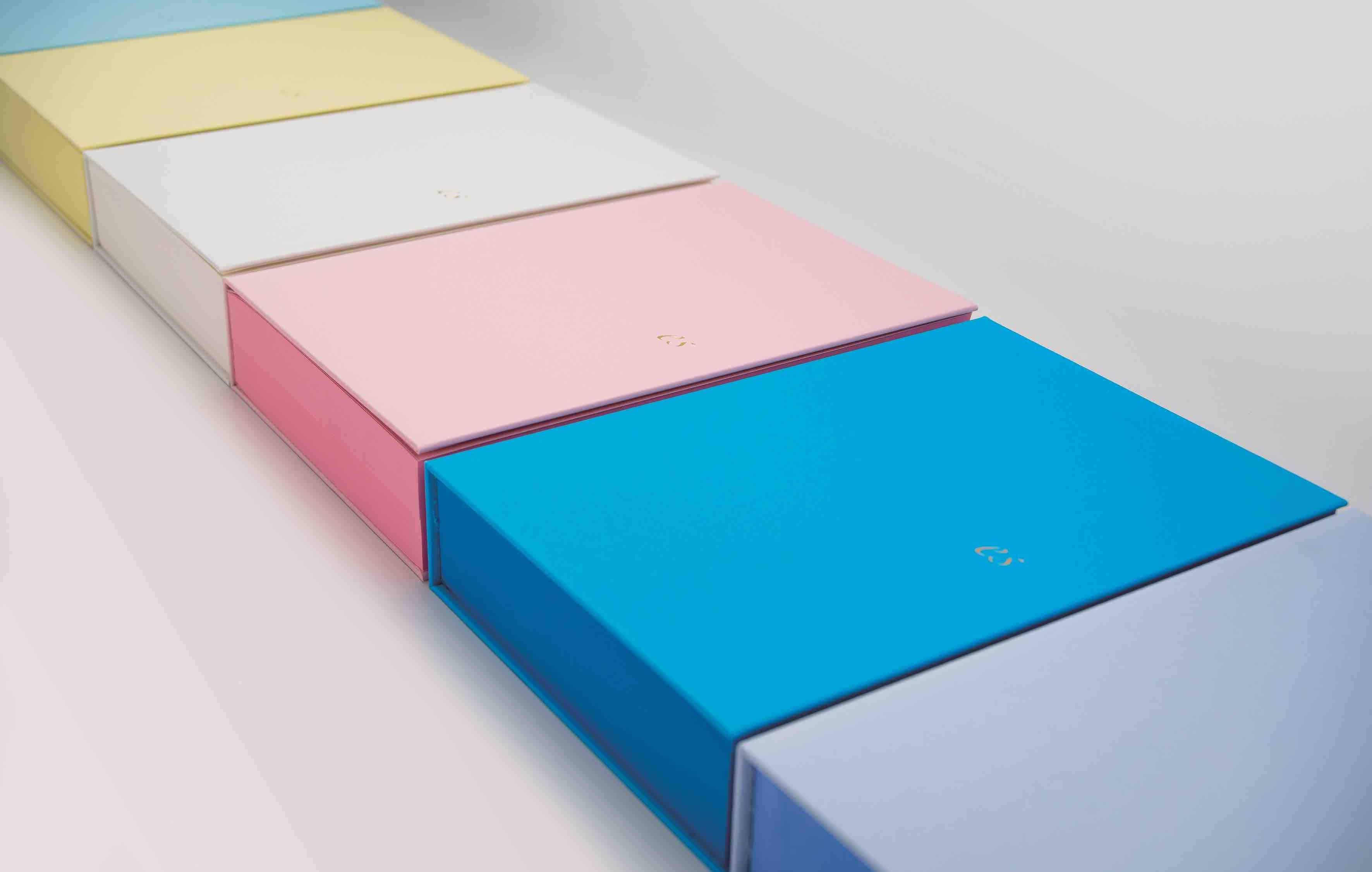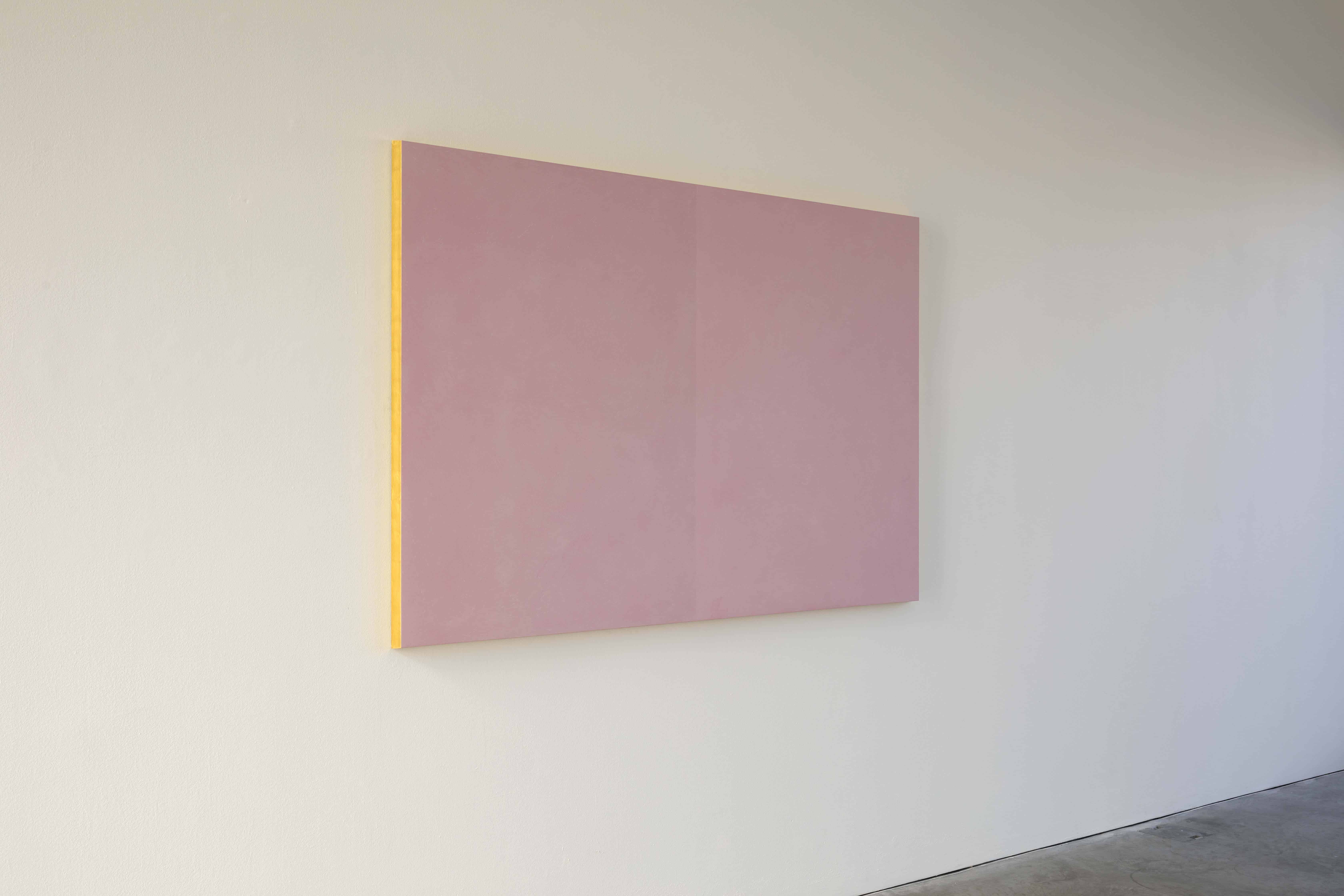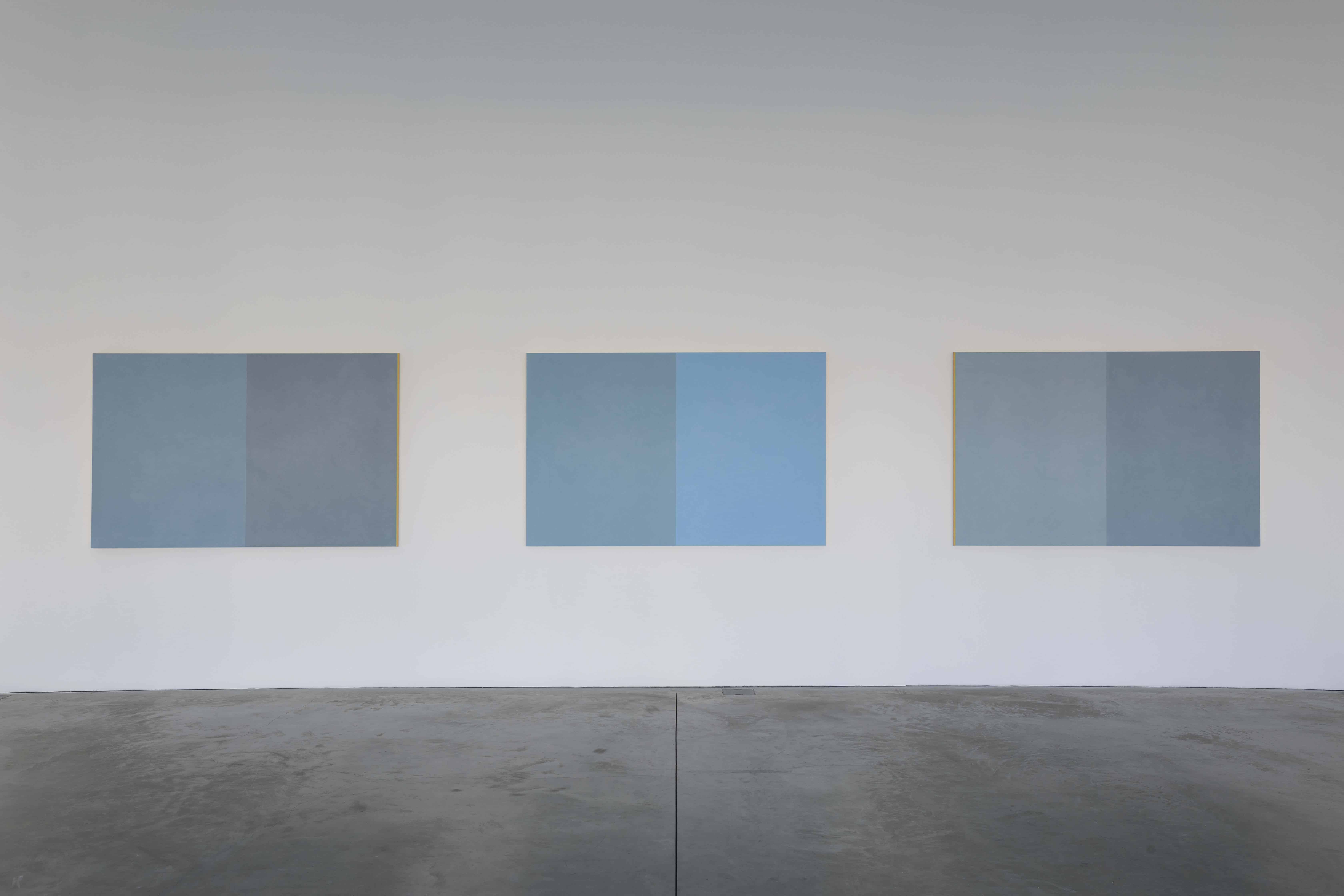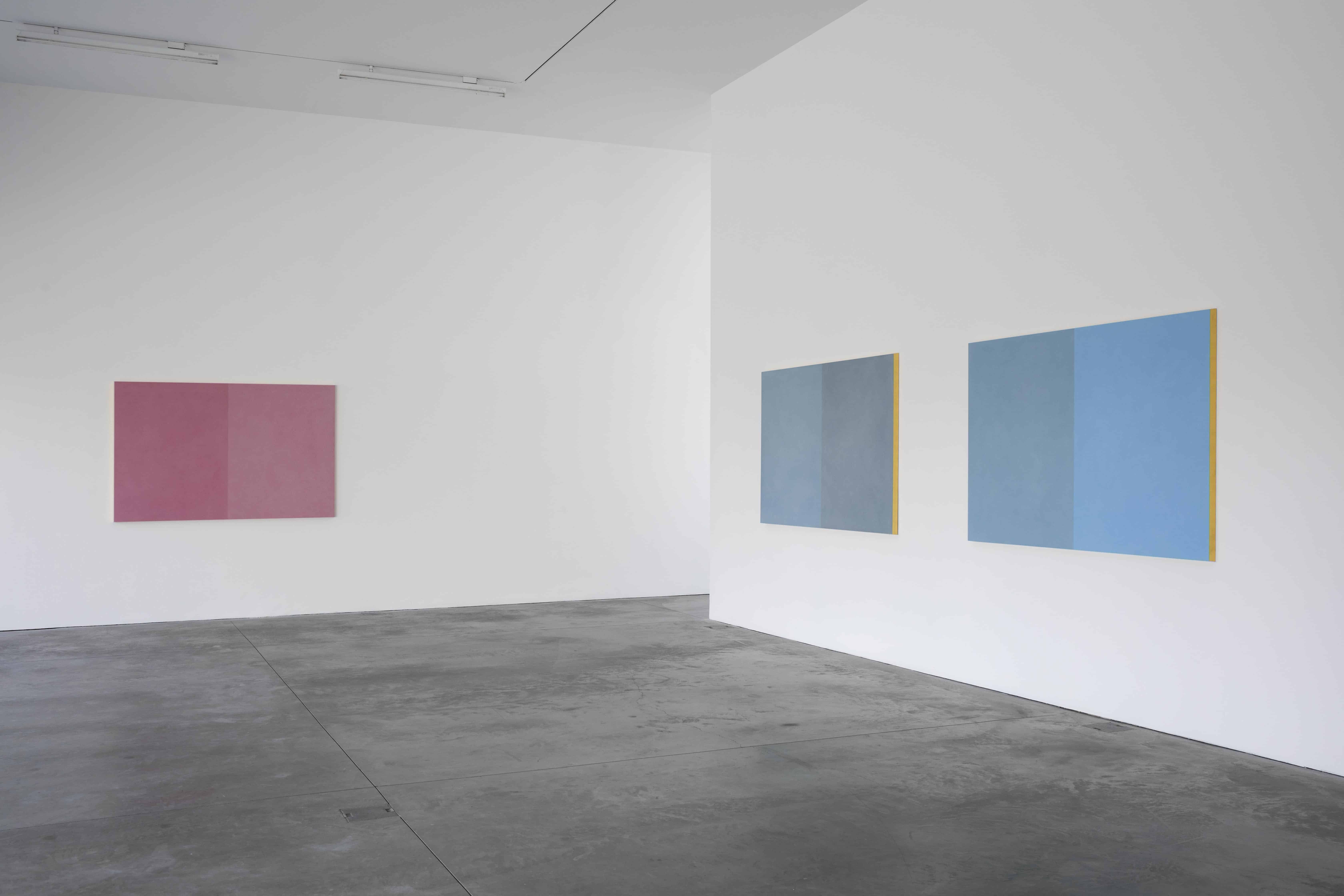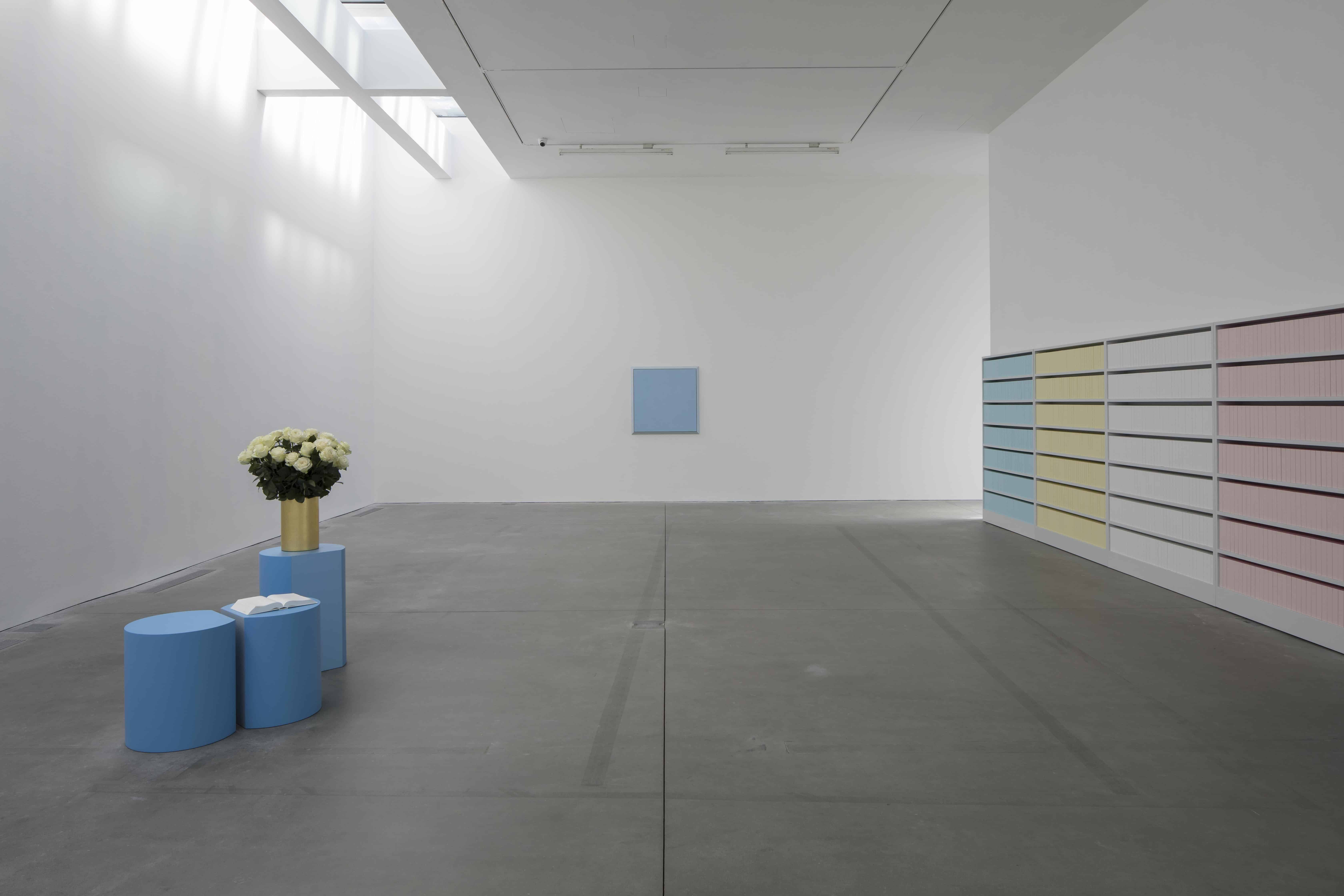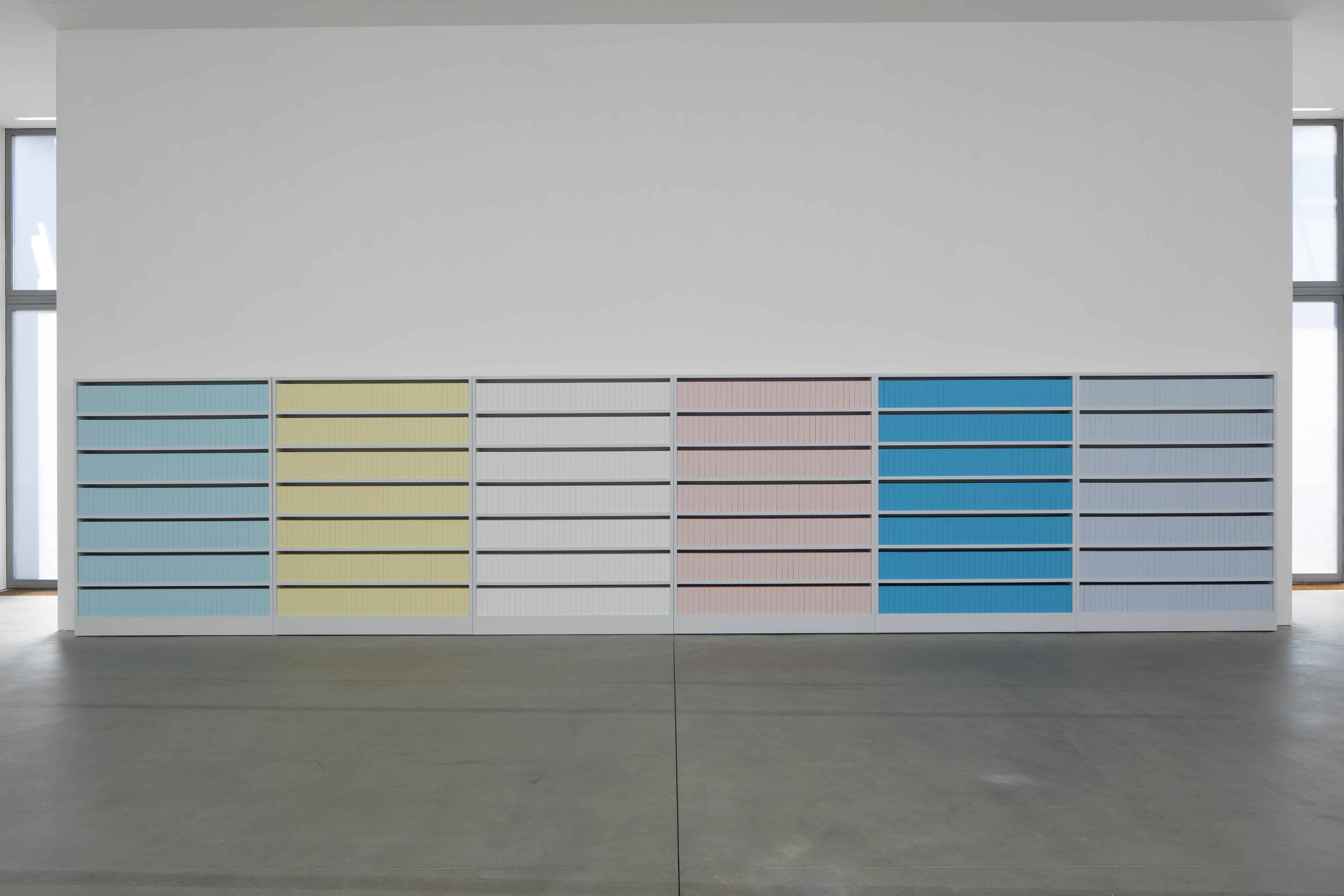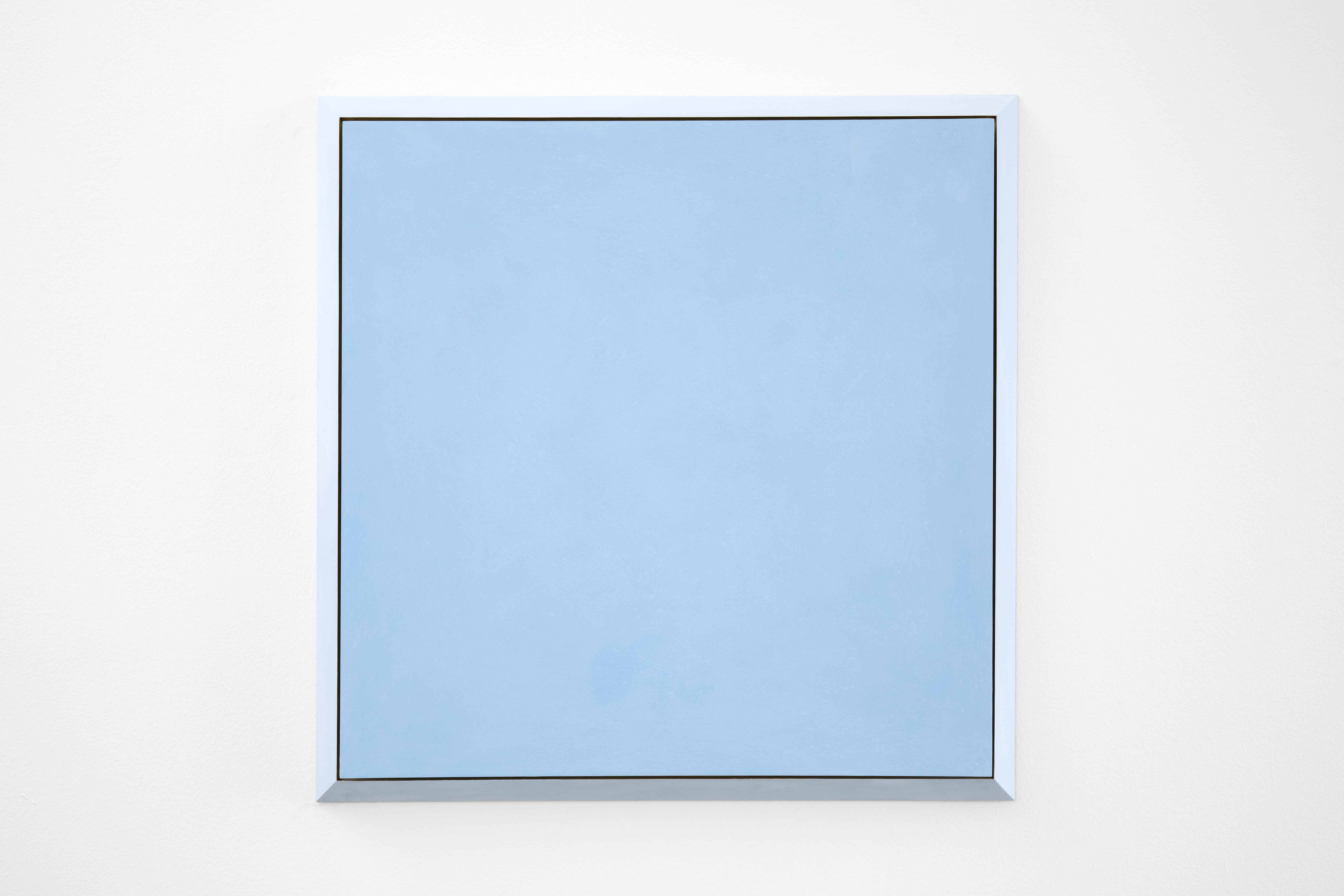Lia Rumma Gallery is pleased to present an exhibition of works by Ettore Spalletti at its Milan venue, 12 years after the opening of the space on Via Stilicone, which was inaugurated precisely with a solo exhibition by the artist from Abruzzo. The project of the exhibition, curated by Studio Ettore Spalletti, had been conceived and initiated by the artist before his passing in 2019.
On the ground floor, the visitor will be greeted by a metaphysical landscape composed of two sculptures, which appear as if suspended in the vast space: Colonna nel vuoto, 2019 and Ellisse, 2016. "In order to conduct a discourse on the appearance of the painterly substance and on its effect of reflection and emergence […] Spalletti has utterly reduced the presence of volumes, whose formalization, producing a column or a parallelepiped, a cup or a bowl, depends on an elementary geometric development, which is tied to the figures of a square and a triangle, a circle and an ellipse" (Germano Celant).
Spalletti made the first column in 1978: "I had in me this desire for verticality, but also the wish for an object that had crossed the whole period of art history and could be continuously recognizable in different moments". The ellipse is a recurring geometric figure in the artist's work: "the relationship with art means going to the studio every day, walking around inside, looking around. Suddenly becoming aware of a colour that approaches you, trying to stop it, develop a feeling for the shapes, think of the lines of geometry: horizontal, vertical, oblique, curved. To break geometry itself, its stiffness, to fill it with a matter that, like smoke, breaks up into subtle dust particles".
On the first floor is a series of works created in 2019 entitled Dittico, oro. Two colors meet on each panel, separated by a vertical line and enclosed in a frame tapered on the sides, covered in gold leaf.
To complete the exhibition, on the second floor, a work presented in the last solo show at the Nouveau Musée National de Monaco, in the Principality of Monaco, which is at the same time new as it was developed by the artist after the Monegasque show: a large installation of almost 1,500 books lined up on the shelves of a sequence of bookcases. The pages of the books are not printed, but soaked in color, which becomes one with the material of which the books are made: tissue paper. "I try to look for a paper with a tactile feeling, which belongs to my work. This is why I have used the tissue paper."
These bookcases are a wonderful example of how color in Spalletti's work expands beyond the boundaries of the painting, into sculpture, but also into installation and architecture. "Colour assumes responsability for the space, the walls are tinted". In this room, painting becomes an environment to enter, in an immersive experience: "I thought of this room as if it were a painting unfolding on the walls. Like entering a library room, with a painting on one side and a painting on the other. I had in mind the perspectives of Vermeer’s interiors." On the walls are two painted "papers," separated from their frames by a thin line of gold, and in the center of the room is a three-piece sculpture housing an open book and a vase of flowers.
The books are blue, gray, pink
they are made of tissue paper
nothing is written on the spine
inside
mathematics, poetry,
literature, philosophy
religion, music
painting, sculpture
drawing
gave me good manners,
low voice
lightness of movements.
Ettore Spalletti
